Table of contents
Peanut butter, also peanut puree is made by grinding mostly roasted peanuts ( Arachis hypogaea). Many of the products available in stores are therefore not raw and are enriched with vegetable fat, salt and sugar. Available in organic quality.
Use in the kitchen
Peanut butter or peanut puree is the puree made from ground peanuts. In commercially available products, the peanuts are roasted before grinding, which is why these products are no longer considered raw food. If you want raw peanut butter, the best thing to do is to make it yourself (see the chapter "Your own preparation"). Peanut butter is available in coarse-grained (crunchy, chunky) or fine (smooth, creamy) varieties. The coarse-grained variety still contains pieces of peanuts because the peanuts are not ground as finely as the fine variety. Whether coarse-grained or fine, high-quality peanut butter without salt and sugar develops an intense, unmistakable nutty aroma of peanuts and has a thick, chewy consistency.
Where is peanut butter used? Peanut butter is often known as a spread on bread - one of the most famous American peanut butter dishes is the "peanut butter and jelly sandwich". Nut butter is particularly popular in sweet cuisine, for example in the production of baked goods and sweets, desserts and breakfast dishes. It can be used to make cakes, tarts, cupcakes, cookies, ice cream and chocolates - such as the popular "peanut butter cups". The butter also tastes excellent on pancakes, as a shake (e.g. with dark chocolate and cherries) or in porridge. Fine snacks are bars containing peanut butter, popcorn covered in peanut butter and fruit dipped in peanut butter (e.g. bananas or apples).
But peanut butter is also a great way to cook. What dishes are there with peanut butter? In many Asian countries it is a popular ingredient in wok dishes, curries and marinated tofu skewers. Peanut butter is also an important component in some African dishes. A vegetable stew prepared with peanut butter (e.g. with chickpeas, pumpkin and spinach, or with tomatoes and kidney beans) or vegan goulash (e.g. Malian goulash) is highly recommended. The butter can also be used to refine sauces, salad dressings (e.g. for Thai mango salad) and soups (e.g. sweet potato and peanut soup) or as an aperitif dip for vegetables.
Homemade preparation
Can you make peanut butter yourself? For raw peanut butter (without sugar and salt), we recommend making it yourself. The only peanut butter ingredients you need are raw peanuts (with or without skin). To do this, chop the required amount of unroasted nuts in a high-performance blender for about 1 minute. Then you have to scrape the mixture off the sides of the blender with a scraper and blend again. Repeat this process until the desired consistency (coarse or fine) is achieved. If you want a slightly more liquid result, you can add a little raw peanut oil.
Recipe for vegan, West African peanut stew
Ingredients (for 4 people): 1 onion, 4 cloves of garlic, 1 piece of ginger (approx. 2 cm), 2 sweet potatoes, 1 tbsp rapeseed oil, 1 tsp cumin (ground), ¼ tsppepper, 4 tbsp peanut butter without salt (organic), 1 tsp tomato paste, 1 L vegetable stock, 100 g basmati rice, ½ bunch of coriander.
Preparation: Peel and chop the onion, garlic cloves and ginger. Peel the sweet potato and cut into slices (approx. 1 cm). Fry the onion, garlic and ginger in a pan heated with rapeseed oil for approx. 2 minutes. Add the sweet potatoes with cumin and pepper and fry for approx. 5 minutes. Add the peanut butter, tomato paste and vegetable stock and stir well. Bring to the boil with the lid on at the highest level and then simmer over medium heat for approx. 15-20 minutes until the sweet potatoes are cooked. Cook the basmati rice according to the instructions on the packet. Rinse the coriander, shake dry and chop finely. After the cooking time has elapsed, arrange the basmati rice and the vegan peanut stew on plates and sprinkle with a little coriander. If you like, you can serve the portions with a tablespoon of soy yogurt.
Vegan recipes with peanut butter (raw) can be found under the note: " Recipes that have the most of this ingredient ".
| Not only vegans or vegetarians should read this: Vegans often eat unhealthily. Avoidable nutritional errors. |
Purchasing - Storage
You can find peanut butter, both coarse and fine, in most supermarkets (e.g. Coop, Migros, Denner, Spar, Aldi, Lidl, Rewe, Edeka, Billa) all year round, and occasionally in other supermarkets (e.g. Volg, Hofer). Organic supermarkets (e.g. Alnatura, Denn's Biomarkt) also offer both varieties - in organic quality.
Is peanut butter the same as peanut puree, or peanut puree the same as peanut butter? In the United States, peanut butter must contain at least 90% peanut ingredients and no more than 55% fat. Seasonings and stabilizers are permitted as additives. 1 In the EU, there are no regulations on the fat and peanut content. However, a distinction is sometimes made between peanut puree and peanut butter. While peanut puree should consist of 100% peanuts, peanut butter can also contain other ingredients such as salt, sugar and vegetable fats. In common parlance, however, the two terms (peanut butter and peanut puree) are usually used without differentiation. 2
Is there peanut butter without additives? When buying, make sure it is of good quality - that is, peanut butter with 100% peanut content (or at least 90%) and no or very few additives such as stabilizers, sugar, salt or other vegetable fats. For raw peanut butter without salt and other additives, we recommend "making your own".
Storage tips
How long does peanut butter last? Peanut butter can be stored at room temperature for around 6 months after opening. If you want to extend the shelf life of peanut butter, store it in the refrigerator. The consistency will then be a little firmer and less creamy. Homemade peanut butter without additives will last for around 2 to 4 weeks in a tightly sealed jar in the refrigerator.
Can peanut butter go bad? It often spoils because contaminants get into the jar from the outside (e.g. from a spoon).
Ingredients - Nutritional Values - Calories
The ingredients depend on the specific product. Peanut butter nutrients are comparable to those of roasted peanuts, as it is mostly made up of them.
Coarse peanut butter without salt contains 589 kcal per 100 g. The peanut butter fat content of 50 g/100 g is very high and accounts for 71.3% of the daily requirement. Of this, 7.6 g are saturated fats. Peanut butter has a very poor ratio of omega-6 to omega-3 fatty acids (LA:ALA) at 175:1 - the target ratio is < 5:1. However, the high protein content of 24 g per 100 g (48.1% of the daily requirement) is pleasing, with the amino acids tryptophan, phenylalanine, leucine and threonine being particularly well represented. This is comparable to that of almond butter (24 g/100 g). 3
Peanut butter is rich in biotin (ex vitamin B7) (67 µg/100g - that makes up 134% of the daily requirement). Raw hazelnuts contain a similar amount (62 µg/100g). Brewer's yeast contains more at 115 µg/100g - but only small amounts are used. 3
100 g of coarse-grained peanut butter contains 1.8 mg of manganese (90% of the daily requirement). Cashew butter (0.82 mg/100g) and coconut butter (1.3 mg/100g) contain less, and almond butter (2.1 mg/100g) contains more. Hazelnuts (6.2 mg/100g) and pecans (4.5 mg/100g) contain significantly higher manganese levels. 3
Peanut butter (coarse grain) contains 14 mg of niacin (ex vitamin B3) per 100 g (86% of the daily requirement). This content can be compared to that of wheat bran (14 mg/100g). Almond butter (3.2 mg/100g), coconut butter (1.9 mg/100g) and cashew butter (1.6 mg/100g) contain much lower amounts. 3
The complete ingredients of peanut butter (coarse grain), the coverage of the daily requirement and comparison values with other ingredients can be found in our nutrient tables. In the article Nutrients explained you will get a detailed insight into the topic.
Health Effects
Is peanut butter healthy? Peanut butter can be useful in small amounts (and for a short period of time) for people with increased protein and calorie needs (such as athletes, pregnant and breastfeeding women). But it should be noted that even small amounts are very filling and have a high energy content.
The results of a 2002 study suggest that regular consumption of peanuts and peanut butter may reduce the risk of type 2 diabetes in women. To avoid increased calorie intake, the authors of the study recommend regular consumption of nut products as a substitute for the consumption of refined grain products. 4
Dangers - Intolerances - Side effects
Peanuts have a high allergic potential. This is because peanuts contain a large number of allergens or proteins. Symptoms of a peanut allergy can also appear when in contact with very small amounts, in severe cases with traces in the air or when in contact with the skin. Depending on the severity of the allergy, the symptoms range from hives to breathing difficulties to anaphylactic shock. If there is a known risk, an allergy sufferer must avoid peanut products completely. Peanuts must be labelled as allergens, even if they only occur in trace amounts. It is interesting to note that roasted peanuts are more likely to lead to a peanut allergy than raw peanuts, as shown by a 2014 study. Roasting changes the peanut proteins, which in this form trigger a higher level of alert in the immune system. 5
Is peanut butter unhealthy? Peanut butter is not suitable for weight loss diets due to its high fat and calorie content. The substances often added such as sugar, salt and fat are also not good for your health. You can find out more about salt, sugar and fat in relation to health in the book review "Salt Sugar Fat".
Peanut butter and peanuts in general also have a very unhealthy fatty acid ratio (omega-6:omega-3). This means that the fats they contain have high amounts of omega-6 fatty acids (linoleic acid; LA) and hardly any omega-3 fatty acids (alpha-linoleic acid; ALA). Excessive amounts of polyunsaturated omega-6 fatty acids and a very high LA:ALA ratio promote the development of numerous diseases - including cardiovascular diseases, cancer, and inflammatory and autoimmune diseases. 15 A maximum ratio of 5:1 (LA:ALA) is still considered desirable. Instead of a ratio, the Federal Nutrition Commission ( EEK) now advocates absolute intake amounts and recommends values of 2.5-9% (omega-6 fatty acids) or 0.5-2% (omega-3 fatty acids) of the daily energy requirement for polyunsaturated fatty acids. This corresponds to a maximum of 20 g per 2000 kcal (omega-6 fatty acids) or 1-4.4 g per 2000 kcal (omega-3 fatty acids). 16 You can read more about fatty acids, including in relation to the type of diet (vegan, vegetarian, mixed diet), in the article Almond butter, unsalted (raw?, organic?).
Note: Almond butter is preferable to peanut butter because of its nutritional value. It only has about half as many saturated fatty acids - despite having a slightly higher total fat content. It also has significantly more calcium, potassium, iron, manganese and fiber and contains more than three times as much vitamin E. 3
Ecological footprint - animal welfare
The CO 2 footprint of peanut butter depends on several aspects, such as the way the peanuts are grown and their country of origin, the corresponding transport and the type of packaging. In a report on the ecological footprints of selected foods in Germany, the value for 1 kg of peanut butter is given as 2 kg CO 2 eq. 10 In the Big Climate Database, the value is 2.85 kg CO 2 eq/kg. 14 The electricity consumption during processing and packaging production has a major influence on the ecological footprint, but the transport routes also play an important role. 11
The amount of water required to produce 1 kg of shelled peanuts is 4381 litres. 12 Due to the additional production processes and the packaging material required for peanut butter, this value is probably even higher.
Peanuts, like soybeans and peas, are legumes and are able to bind nitrogen from the soil, which is important for agriculture. This can improve soil fertility, as this nutrient is later available to other plants. 6
The peanut industry produces large amounts of organic waste that has the potential to be used to produce biofuel. The CO 2 reduction that would result from the use of peanut shells is particularly significant for China, India and Nigeria. 13
Worldwide occurrence - cultivation
The Incas and Aztecs processed peanuts into a paste, which is why they can be considered the "inventors" of the first form of peanut butter. Modern peanut butter, its production process and the equipment used to make it, are the work of at least three inventors. In 1884 , Marcellus Gilmore Edson of Canada patented peanut paste, the end product of grinding roasted peanuts between two heated surfaces. In 1895 , Dr. John Harvey Kellogg (the inventor of Kellogg's cereal) patented a process for making peanut butter from raw peanuts. He marketed it as a nutritious protein substitute for people who could hardly chew solid food. In 1903 , Dr. Ambrose Straub of St. Louis (Missouri) patented a machine for making peanut butter. 7
Peanut butter is particularly popular in North America (USA, Canada), but also in parts of Asia (Philippines, Indonesia), Europe (Netherlands, United Kingdom), Australia and South Africa.
Industrial production
How can you make peanut butter? The production process begins with peeling the peanuts, sorting them by size and sorting out the poor quality ones. For a high-quality puree, large nuts are used first and foremost. Roasting them for around 45 minutes at 160 °C reduces the water content to around 1%. After cooling, the peanuts are put into a mill. In several steps, this grinds the nuts into a paste with the desired structure. During this process, additives are added such as: salt, sugar, other spices to round off the taste, stabilizers such as hardened vegetable fats or oils to prevent the peanut oil from separating from the solid peanut mass. 8 Finally, the peanut butter is filled into sterile jars. 9
Much of the peanut butter available on the market is made from roasted peanuts to ensure and extend shelf life. Since raw peanuts have a higher water content, they are more susceptible to mold.
Further information
Peanut butter is particularly popular in the USA and even has its own national holiday: On January 24th, Americans celebrate Peanut Butter Day.
Alternative names
In German, the following terms are used as synonyms for peanut butter: peanut butter, peanut cream and peanut paste. Incorrect spellings (eg peanut butter, peanut mash) creep in.
In English, coarse-grained peanut butter is called chunky peanut butter or crunchy peanut butter.
Bibliography - 16 Sources (Link to the evidence)
| 1. | Fda.gov Food Standard Innovations: Peanut Butter's Sticky Standard. |
| 2. | Erdnussbutter org: Erdnussmus. 2017. |
| 3. | USDA United States Department of Agriculture. |
| 4. | Jiang R, Manson JE, Stampfer MJ, Liu S, Willett WC, Hu FB. Nut and peanut butter consumption and risk of type 2 diabetes in women. JAMA. 2002;288(20):2554–60. |
| 5. | Moghaddam AE, Hillson WR, Noti M, Gartlan KH, Johnson S, Thomas B, u. a. Dry roasting enhances peanut-induced allergic sensitization across mucosal and cutaneous routes in mice. J Allergy Clin Immunol. 2014;134(6):1453–6. |
| 6. | Akram NA, Shafiq F, Ashraf M. Peanut (Arachis hypogaea L.): A Prospective Legume Crop to Offer Multiple Health Benefits Under Changing Climate. Comprehensive Reviews in Food Science and Food Safety. 2018; 1325-1338. |
| 7. | Nationalpeanutboard org: Who Invented Peanut Butter? |
| 8. | Bayerisches Landesamt für Gesundheit und Lebensmittelsicherheit. Aflatoxine in Erdnussbutter - Untersuchungsergebnisse 2008. |
| 9. | Ministery of Food Processing Industries - Government of India. Niftem. Processing of Peanut Butter. 2022. |
| 10. | Reinhardt G, Gärtner S, Wagner T. Ökologische Fussabdrücke von Lebensmitteln und Gerichten in Deutschland. Institut für Energie - und Umweltforschung Heidelberg. 2020. |
| 11. | McCarty JA, Sandefur HN, Matlock M, et al. Life Cycle Assessment of Greenhouse Gas Emissions Associated with production and consumption of peanut butter in the US. |
| 12. | Sandefur HN, McCarty JA, Boles EC, Matlock MD. Peanut Products as a Protein Source: |
| 13. | Perea Moneo MA, Manzano Agugliaro F, Hernandez Escebedo Q, Perea Moreno AJ. Peanut Shell for Energy: Properties and Its Potential to Respect the Environment. |
| 14. | CONCITO. The Big Climate Database, version 1. 2021. |
| 15. | Simopoulos AP. The importance of the ratio of omega-6/omega-3 essential fatty acids. Biomedicine & Pharmacotherapy. 2002;56(8):365–79. |
| 16. | EEK Bericht: Fette in der Ernährung, 2012 (pdf). |

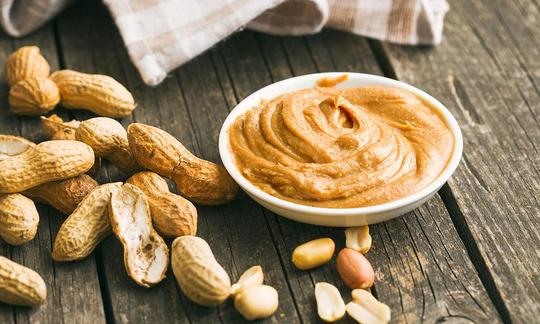

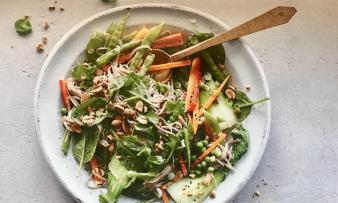
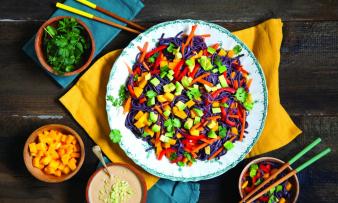
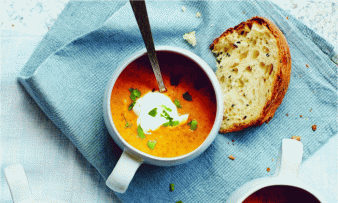

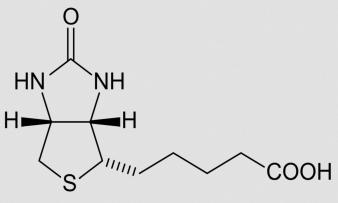



Comments